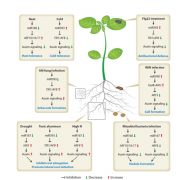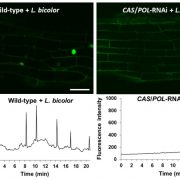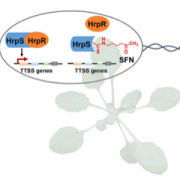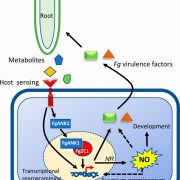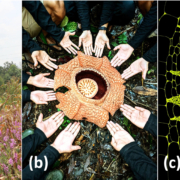Biological relevance of VOCs emitted during the pathogenic interactions (Mol. Plant Pathol.)
 It is well known that upon pathogenic infections, plants defend themselves by emission of volatile organic compounds (VOCs) as one of the defence strategies. This work by Cellini et al. aims to understand the biological relevance of these organic volatiles in the fire blight disease of apple caused by Erwinia amylovora (Ea). The authors performed a proton transfer reaction mass-spectrometry (PTR-MS) to understand the dynamics of VOC regulation. Exposing their healthy neighbors to VOCs from Ea-infected plants led to the reduction in pathogen growth and migration, and the induction of defence responses. Thus, communication in the form of VOCs from the infected plants stimulated defence in uninfected plants. Further research on how such compounds are perceived by the plants and how this response is suppressed by the pathogens will provide new understanding in future. (Summary by Amey Redkar) Mol. Plant Pathol. 10.1111/mpp.12509
It is well known that upon pathogenic infections, plants defend themselves by emission of volatile organic compounds (VOCs) as one of the defence strategies. This work by Cellini et al. aims to understand the biological relevance of these organic volatiles in the fire blight disease of apple caused by Erwinia amylovora (Ea). The authors performed a proton transfer reaction mass-spectrometry (PTR-MS) to understand the dynamics of VOC regulation. Exposing their healthy neighbors to VOCs from Ea-infected plants led to the reduction in pathogen growth and migration, and the induction of defence responses. Thus, communication in the form of VOCs from the infected plants stimulated defence in uninfected plants. Further research on how such compounds are perceived by the plants and how this response is suppressed by the pathogens will provide new understanding in future. (Summary by Amey Redkar) Mol. Plant Pathol. 10.1111/mpp.12509


